Summary of climate disasters on the planet, September 24–30, 2025
The past week brought a series of anomalous natural events across several continents — from Africa and Asia to Europe and the Americas.
At the epicenter were not only countries accustomed to nature’s fury, but also those where such phenomena were once considered almost impossible. Details follow in this week’s report — September 24–30, 2025.
Thailand
On the morning of September 24, in Bangkok, the capital of Thailand, a massive sinkhole suddenly formed on Samsen Road in the Dusit district, measuring approximately 30 by 30 meters (98 × 98 ft) and about 50 meters (164 ft) deep.
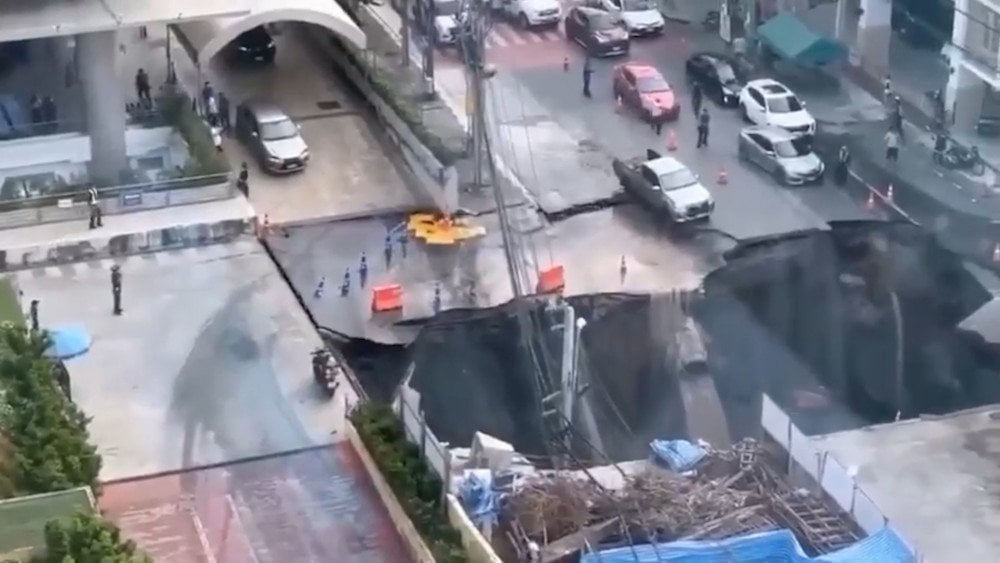
Sudden road collapse on Samsen Road in central Bangkok, Thailand
The collapse occurred right in front of Vajira City Hospital and a police station. It swallowed two vehicles, destroyed power line poles, and ruptured water pipes.
Rescue teams evacuated patients and hospital staff, as well as residents of nearby buildings and police personnel, fearing further collapses. The hospital suspended outpatient services for at least two days.
As a precaution, electricity and water were shut off in the surrounding area.
Drones were deployed to inspect the site — footage showed that the ground around the sinkhole continued to shift.
Later, as rain began to fall, the situation worsened. There was another collapse, and emergency crews had to stop their rescue operations.
Throughout the day, the sinkhole expanded, bringing down other buildings.
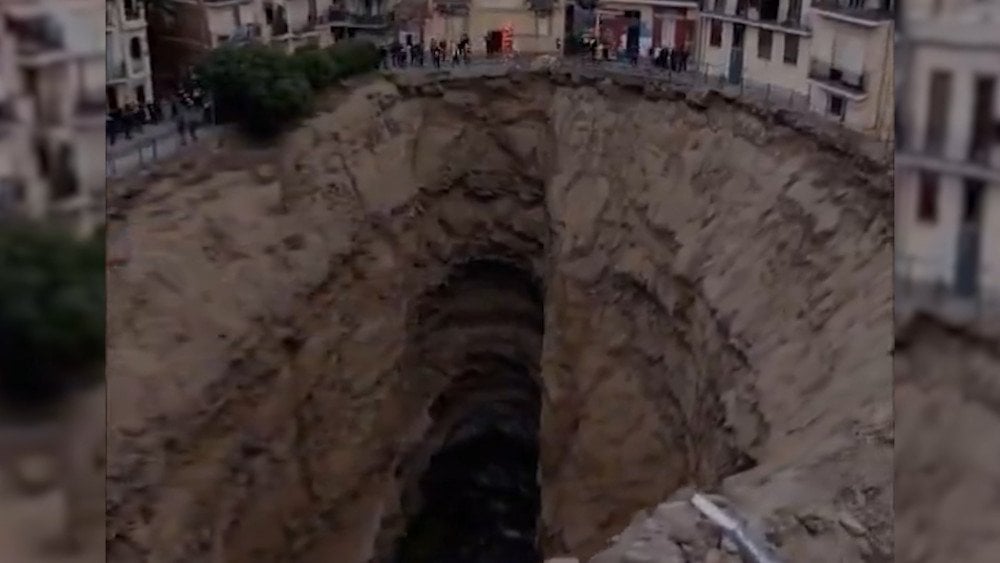
Deep crater formed after a secondary ground collapse in central Bangkok, Thailand
There were no casualties, but the damage to infrastructure and property was enormous. Preliminary assessments indicate that reconstruction will take at least a year.
Several experts suggest that the likely cause may have been a water leak or metro construction, though the true nature of the phenomenon remains uncertain.
United States
From September 26, the state of Arizona was hit by powerful thunderstorms accompanied by anomalous downpours.
Most areas of metropolitan Phoenix received more than a month's worth of rain, and Phoenix Sky Harbor Airport recorded 41 mm (1.6 in) of rain — the highest single-day total for the past seven years.
The mining town of Globe was among the hardest hit: torrential rain caused a sudden flash flood, with water rushing through the streets, sweeping away cars and uprooting trees, while residents sought refuge on rooftops, awaiting rescue.
The flood carried away about 1,000 propane tanks from a local distribution site, scattering them through the historic downtown area and creating a potential explosion hazard. A state of emergency was declared, and hazardous materials teams were deployed. Fortunately, no explosions or fires occurred.
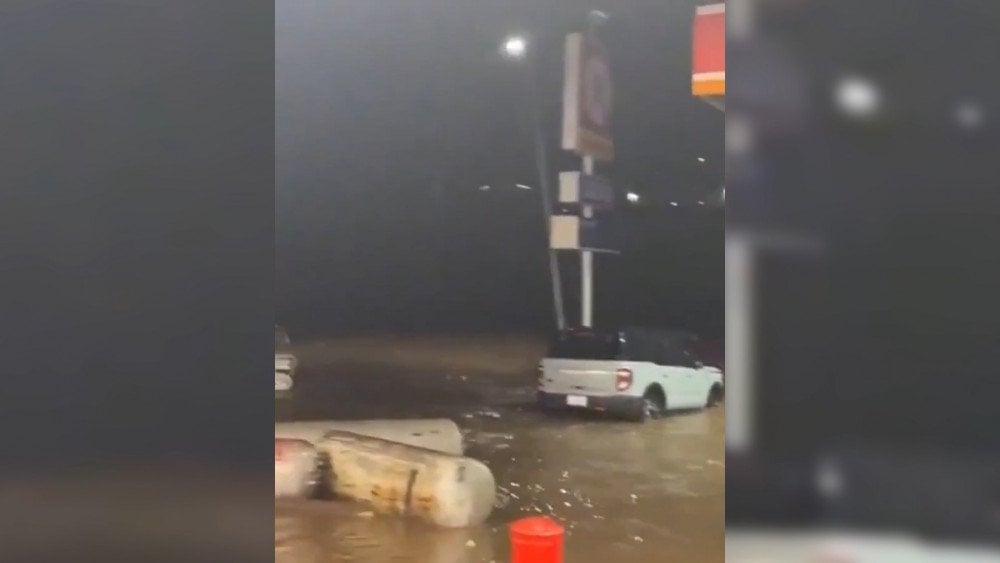
Floodwaters carried away gas tanks, scattering them across the streets of Globe, Arizona, USA
Tragically, not everyone was able to escape. In Globe, three people were killed after being swept away by floodwaters, and another man drowned in a suburb of Phoenix.
The disaster destroyed roads and forced the closure of sections of Highway 60.
The nearby town of Miami was also inundated. Residents compared the event to a sudden hurricane strike: water poured in like a wall, and visibility dropped to zero.
The flooding also reached tourist areas. Water quickly submerged the Havasupai Canyon, famous for its waterfalls and hiking trails. Visitors had to be urgently evacuated.
Libya
On September 27, residents of the city of Zaltan, in western Libya, witnessed a rare natural phenomenon for the region — a powerful hailstorm that struck several districts simultaneously. Eyewitnesses were stunned by the suddenness and intensity of the event. Large hailstones shattered windows and damaged cars and buildings, causing significant property damage.
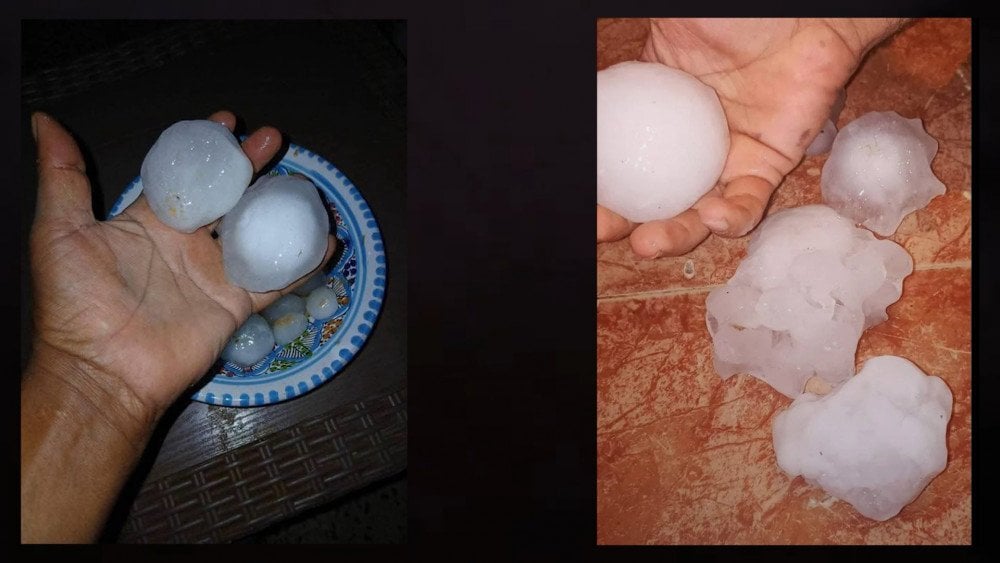
Anomalously large hail fell in the city of Zaltan, Libya
Italy
On September 27, the city of Albavilla, in the Province of Como (Lombardy Region), was struck by a sudden downpour, accompanied by strong winds and heavy hail. Within minutes, the streets turned into icy rivers, catching residents completely off guard.
This was already the second severe storm to hit the region within a week — and according to eyewitnesses, it was significantly stronger than the previous one.
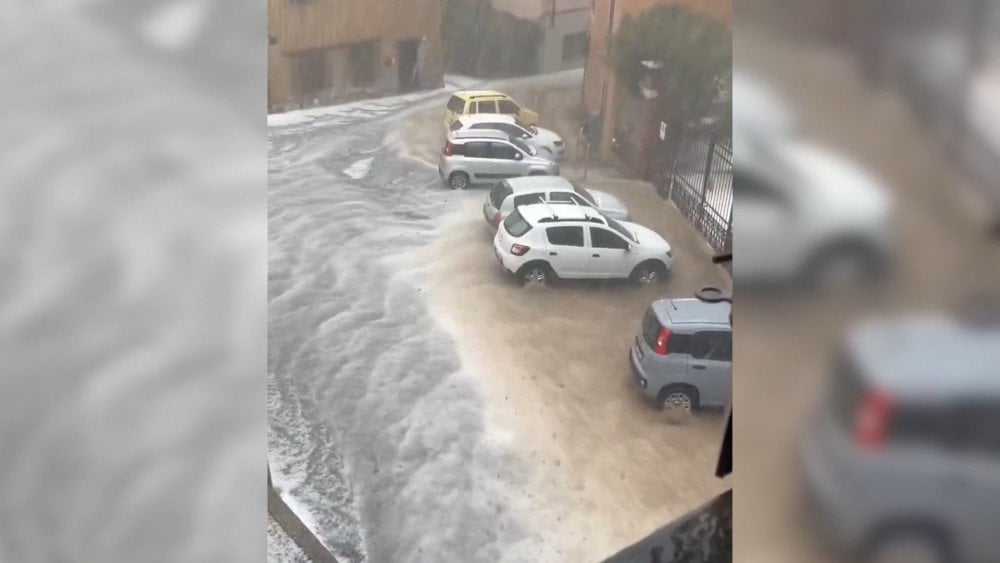
Powerful rain and hailstorm flooded the streets of Albavilla, Province of Como, Lombardy Region, Italy
On September 29, in the city of Como, Camnago Volta district, a large sinkhole opened on the roadway after intense rainfall, swallowing a car.
And this was not the first such incident: earlier, on September 22, a deep ground collapse occurred right in the middle of a road along a popular tourist route near Lake Como in the Province of Como. Just a day earlier, the region had recorded its heaviest rainfall in 25 years, which eroded the soil beneath the road surface. Preliminary estimates suggest that reconstruction of the affected section will take around two months.
Russia
Residents of Siberia continue to be stunned by extreme temperature anomalies.
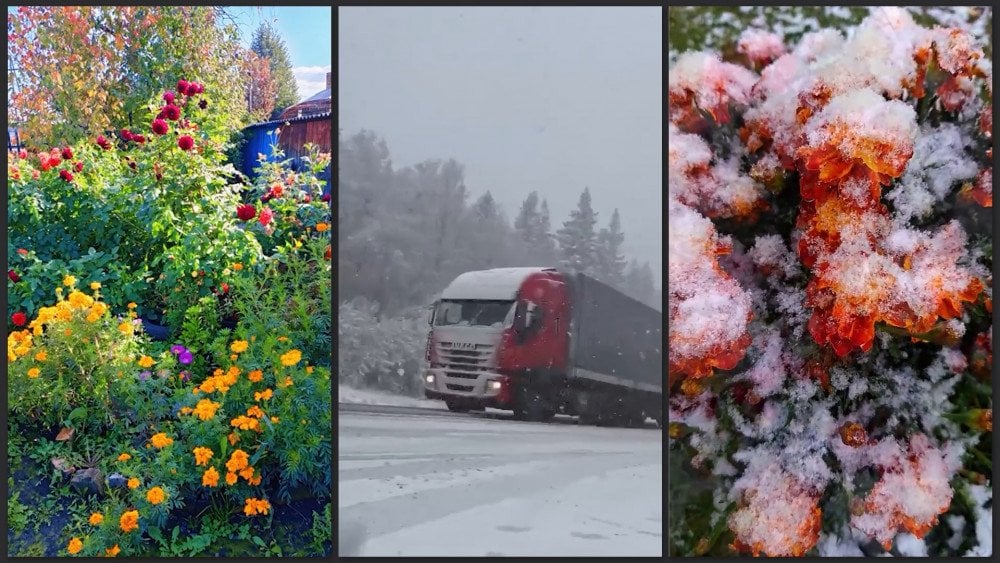
Temperature contrasts across Russia: sudden cold and snow following record heat
At the end of September, summer-like heat set in across the southern part of the region. For example, in Novosibirsk, air temperatures reached +27 °C (80.6 °F) — more than 10 °C (18 °F) above normal (the average maximum for September is +16.1 °C / 61 °F).
These unseasonal temperatures were accompanied by abrupt fluctuations. In Irkutsk, on September 29, daytime temperatures climbed to +21.3 °C (70.3 °F), but by night they had dropped to nearly 0 °C (32 °F), and snow began to fall.
The Ural region was also struck by anomalous snowfall. A powerful cyclone hit the Chelyabinsk region on the night of September 28. Within minutes, the snow made roads dangerously slippery and significantly reduced visibility. Traffic on the M5 federal highway was disrupted due to drifts, and snowplows were deployed to clear the roads.
In the Kartalin district, on September 29, heavy wet snow caused numerous trees to fall, leading to power outages.
Snowfalls were also reported in the Sverdlovsk region and Bashkortostan.
Taiwan
On September 24, Taiwan Railways Express No. 423 collided with a large boulder that had fallen onto the tracks at the 146th kilometer of the Taitung Line.
The locomotive was damaged, and two carriages derailed. There were about 330 people on board — passengers and crew — but fortunately, no one was injured. People were evacuated from the scene by special trains and buses. Traffic on the damaged section was interrupted, and on the adjacent section, transport was temporarily provided by ground vehicles.
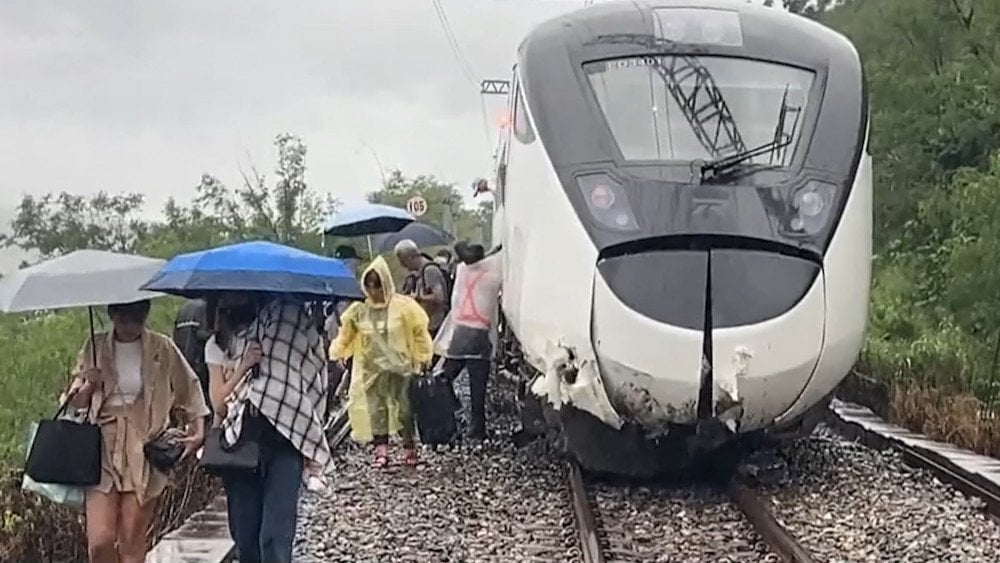
Passengers evacuate from the damaged train after collision with a large boulder on the Taitung railway line, Taiwan
The incident was caused by torrential rains brought by Super Typhoon Ragasa, which triggered landslides and rockfalls in Taitung County.
Mexico
In Mexico, severe weather struck multiple states simultaneously. On September 26, in the city of Culiacán, Sinaloa State, 54 mm (2.1 in) of rain fell in just one hour. The extreme downpour claimed the life of a 9-year-old boy, who was swept away by a torrent of rushing water.
The heavy rains caused widespread damage to hundreds of businesses, destroying goods and equipment. In residential areas, dozens of homes were affected, and over forty vehicles were swept away by floodwaters. Rescue teams evacuated children and staff from a flooded kindergarten.
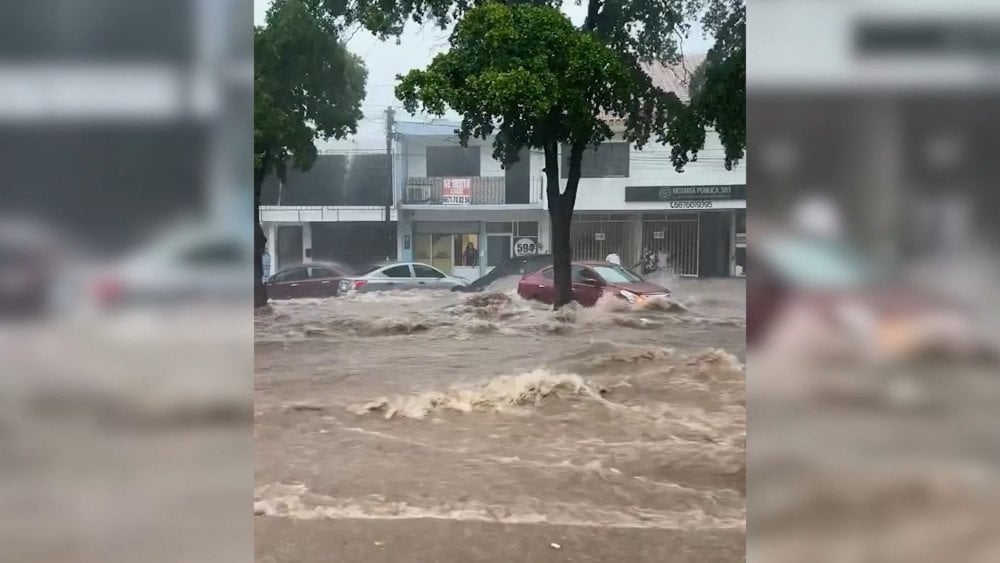
After the heavy downpour, the streets of Culiacán, Sinaloa State, Mexico, turned into raging rivers
On September 27, rivers overflowed in the state of Veracruz, flooding homes and destroying corn and lime crops. Hundreds of families were affected, many cut off from the outside world.
In the city of Córdoba, a Toyota car dealership was completely submerged. To assist the victims, the army and the National Guard were deployed to the region.
Ukraine
On September 30, the city of Odesa was hit by a catastrophic downpour — in just seven hours, nearly two months’ worth of rain fell (the average September total is 42 mm / 1.7 in), and by the end of the day, 94 mm (3.7 in) had accumulated.
The stormwater drainage system failed, leaving streets, underpasses, parking lots, and shops submerged. Dozens of private houses and basement levels of apartment buildings were flooded.
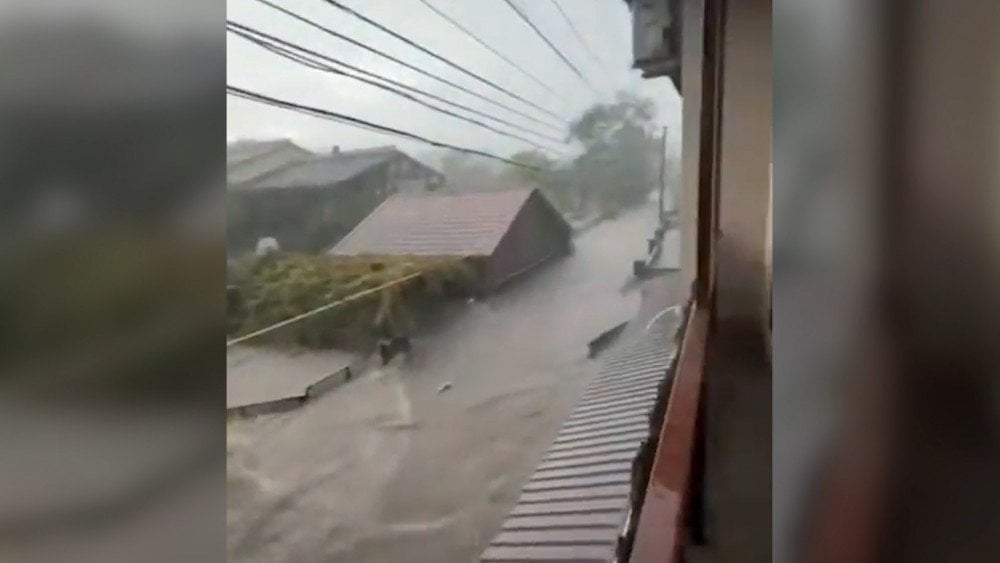
The city of Odesa was engulfed by a powerful flood: streets and homes went underwater, Ukraine
Traffic lights stopped working, all electric transport came to a halt, and movement on key highways was halted. Power outages were observed in many areas. People waded waist-deep in water, struggling to stand against strong currents; many experienced hypothermia after prolonged exposure to cold water.
In one of the residential areas, a minibus carrying 60 passengers fell into a hole that had formed in the road, and a passenger car partially sank into the ground. Rescuers arrived in time and rescued everyone.
Across the city and surrounding areas, more than 360 residents were rescued, and hundreds of vehicles were evacuated.
A red danger level was declared in Odesa, and schools switched to remote learning.
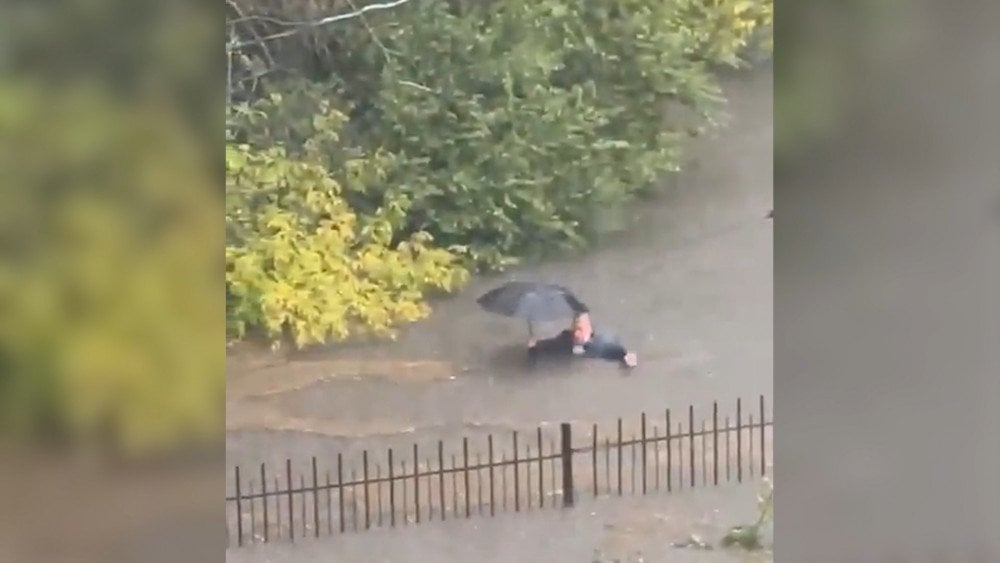
A person struggles to escape the water flow during a major flood, Odesa, Ukraine
As of October 1, the disaster had claimed 10 lives. Among the victims was a family of five and their child who lived in a basement apartment. According to neighbors, the water rose about 4 meters (13 ft) in just 15 minutes and they had no chance to escape.
Several other people drowned, swept away by raging currents.
Typhoon Bualoi
On September 26, Tropical Storm Bualoi (known locally as Opong) struck the Philippines, just a few days after the deadly blow of Super Typhoon Ragasa.
This time, the storm affected the central and southern regions of the country — the Bicol, Mimaropa, Eastern, Central, and Western Visayas areas were hit the hardest.
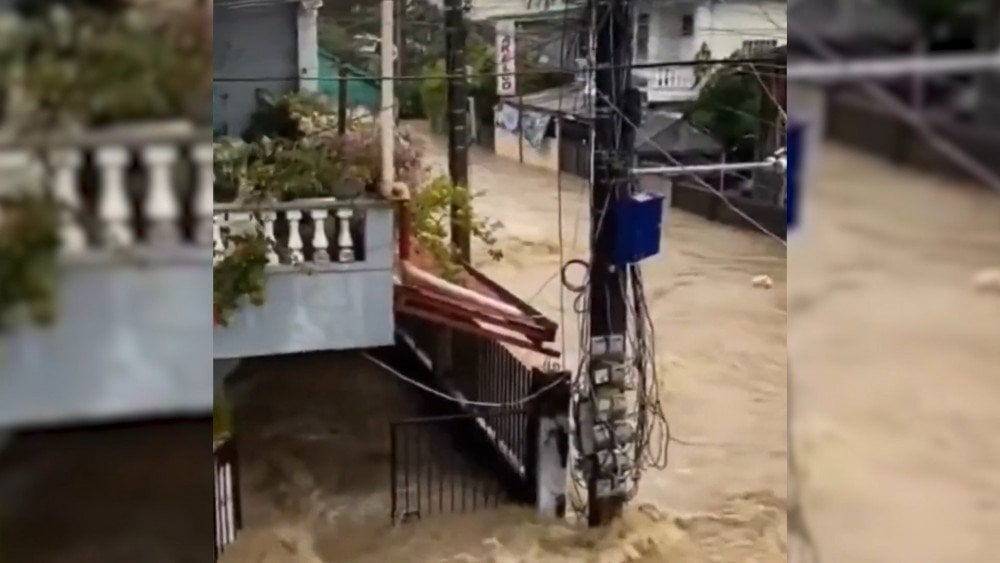
Tropical Storm Bualoi caused catastrophic flooding in the Philippines
Winds with gusts up to 135 km/h (84 mph) toppled trees and power lines, blocking roads and bridges. Torrential rains triggered floods and landslides. The disaster damaged nearly 9,000 homes and forced 400,000 people to evacuate.
In rural areas, fields and farms were flooded. Many communities were left without water, electricity, shops, or medical care. Hundreds of boats were damaged by storm waves.
As of September 30, 27 people had been confirmed dead and 14 were missing.
After strengthening over the South China Sea and becoming a typhoon, Bualoi made landfall in Vietnam on the night of September 28, hitting the Ha Tinh and Quang Tri provinces. It came ashore with wind gusts up to level 14, waves up to 8 meters (26 ft) high, and torrential rainfall — in some areas, over 500 mm (19.7 in) fell.
In Nghe An Province, water levels rose almost to the rooftops, leaving tens of thousands of families isolated. At a local lung disease hospital, the power generator failed during the night, forcing the urgent evacuation of patients on life-support machines to another facility.
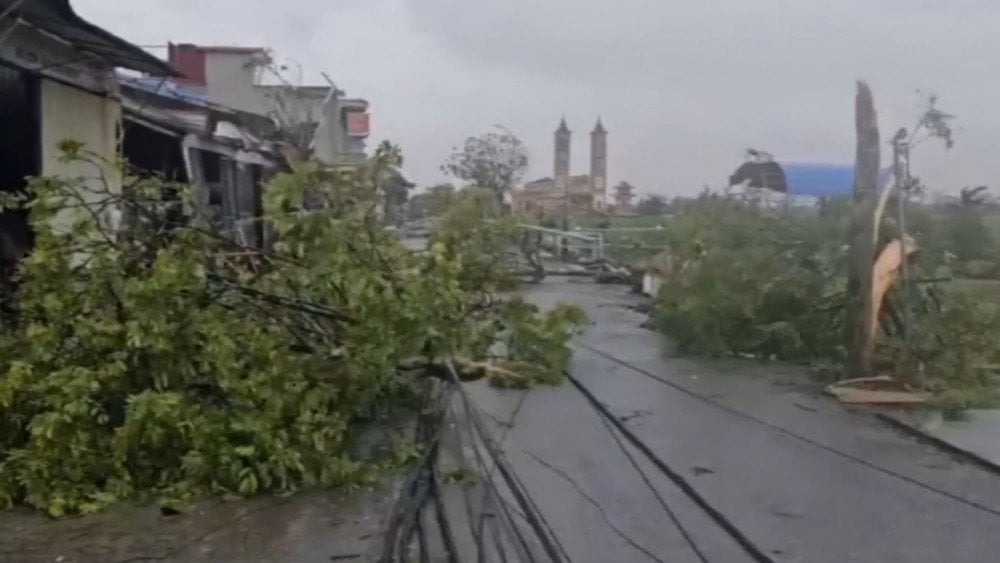
Damaged buildings and fallen trees — aftermath of Typhoon Bualoi in Vietnam
The disaster caused enormous destruction: in Central Vietnam alone, over 144,000 homes were damaged. More than 26,000 hectares of rice and other crops were ruined.
Large areas were left without electricity, as 6,267 power line poles were damaged during the storm. Four domestic airports were closed.
In Quang Tri Province, two fishing vessels sank. The search operation was hampered by strong waves and winds that persisted even after the typhoon weakened.
The education sector suffered severe losses as well: at least 1,059 schools were damaged or flooded across the provinces of Thua Thien Hue, Quang Tri, Ha Tinh, Nghe An, and Thanh Hoa.
More than 53,000 people were forced to leave their homes.
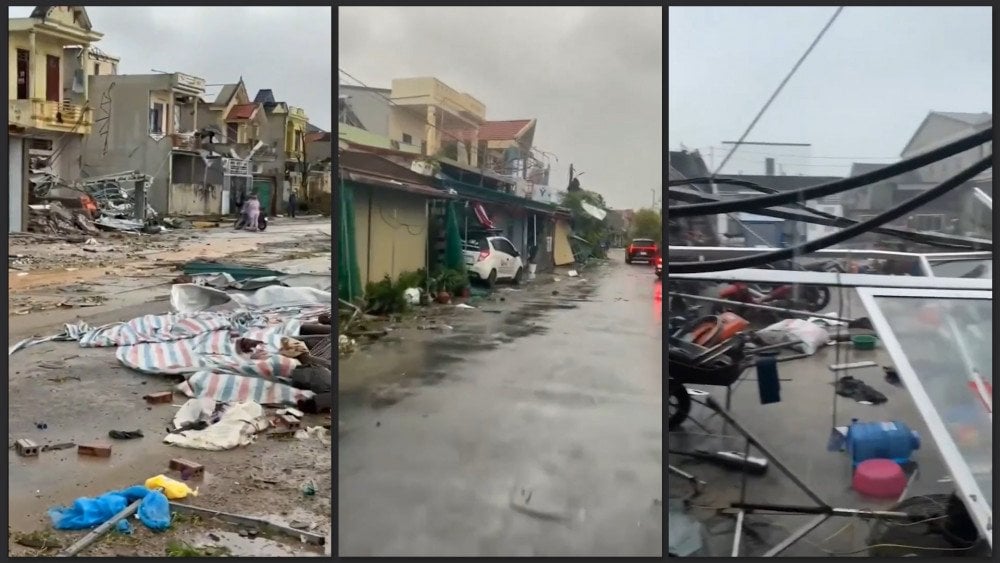
Devastation and chaos on the streets of Vietnam after Typhoon Bualoi
Floods and landslides also reached the capital, Hanoi, where residents admitted they had never seen such flooding before.
According to local meteorologists, Typhoon Bualoi was one of the most unusual and extreme ever recorded: its speed across the South China Sea reached 35 km/h (22 mph) — almost twice the normal rate, and it lingered over Ha Tinh Province for more than 11 hours, becoming the strongest in the region’s history.
Moreover, the typhoon triggered an unusually high number of tornadoes — on September 29, eight funnels formed within just 24 hours across the provinces of Nam Dinh, Ninh Binh, Hai Duong, Thanh Hoa, Thai Binh, Quang Ninh, and the cities of Hanoi and Haiphong.
The most destructive tornado struck Ninh Binh Province, killing 9 people and injuring 18, and damaging over 120 houses, some of which were completely destroyed.
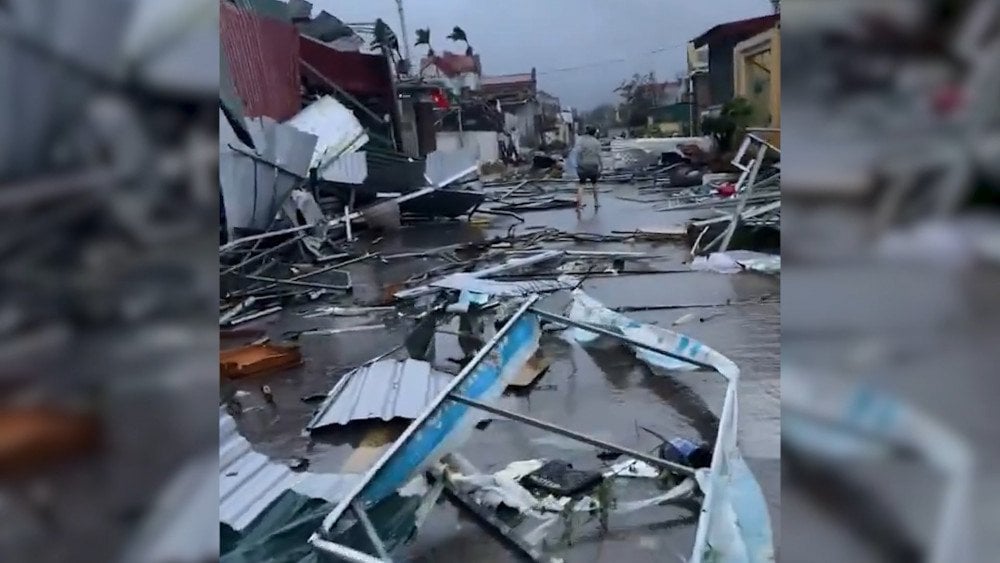
Typhoon Bualoi swept across Vietnam, leaving a trail of devastation behind
In total, 29 people died and 22 were reported missing in Vietnam.
According to updated data as of October 4, the death toll rose to 55, with 12 people still missing.
Philippines
On the evening of September 30, at 21:59 local time, a powerful M6.9 earthquake struck the province of Cebu in the Central Visayas region, about 19 km (12 mi) from the coastal city of Bogo, home to nearly 90,000 residents. The quake became one of the strongest in the central Philippines in the past decade.
It occurred at a dangerously shallow depth of just 5 km (3.1 mi), causing massive destruction and numerous casualties.
As of October 1, 69 people were confirmed dead, with dozens more injured.
Thousands of residents spent the night outdoors, fearing aftershocks. Within the first 10 hours after the quake, the Philippine Seismic Network recorded 722 aftershocks, with magnitudes reaching up to 4.8.
In Cebu Province, the hardest-hit area, a state of emergency was declared.
In the municipality of Daanbantayan, the 139-year-old church was reduced to ruins.
In Bogo City, closest to the epicenter, roads and bridges sustained major damage, complicating rescue efforts.
In San Remigio, part of a sports complex roof collapsed during a basketball game, resulting in fatalities.

People remain on the streets after the strong earthquake, fearing aftershocks — Philippines
In the city of Cebu, the quake even interrupted the “Miss Asia and Pacific International 2025” beauty pageant.
The earthquake also damaged power lines, causing widespread blackouts across Cebu and neighboring islands, along with water supply disruptions.
The Philippines are a clear example of the cascade effect of disasters — when one catastrophe follows another, often with greater force, leaving people no time to recover from previous destruction.
And for those who still believe that climate disasters only affect tropical regions labeled as “permanent catastrophe zones,” it’s time to look more closely at what is happening in the USA, Russia, and Europe. Could we ever have imagined that in these places, people would die from ordinary rain?
But the problem is that rain is no longer ordinary: it is dangerous because huge amounts of water fall in a matter of minutes and rush like a tsunami. Many people have no experience or awareness that their homes can become completely submerged within moments, leaving no chance to escape.
This is where the danger is: it’s in failure to understand the real threat and in unpreparedness. When disaster strikes, you should not stay in basements, tunnels, underground parking lots, or underpasses, and you should not try to cross a raging torrent, as it can knock you off your feet. These seemingly simple safety measures can save lives in a critical moment.
That is why we will continue to repeat: right now — before you find yourself sitting on the roof of your flooded home, waiting for rescue — it is vital to understand what is happening with the climate worldwide and how familiar weather patterns have changed.
Your preparedness can save not only your life, but also the lives of your family, neighbors, and everyone nearby when disaster strikes.
You can watch the video version of this article here:
Leave a comment